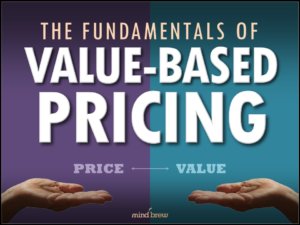Recently, there’s been some debate in the pricing space about the true nature and definition of value-based pricing. Now, I’m usually very happy to see any sort of discussion around this topic, as I don’t believe value-based pricing gets anywhere near the attention it truly deserves.
But in this particular case, I’m not sure there’s much to debate…
Some are saying that value-based pricing is about understanding, aligning to, and ultimately capturing different buyers’ willingness-to-pay. Meanwhile, others are suggesting that value-based pricing has to do with boosting various buyers’ willing-to-pay by working to positively influence their value perceptions.
So, which side is right? Is value-based pricing about capturing willingness-to-pay? Or is it about influencing value perceptions?
The truth is that regardless of which side might be “right” according to some textbook, it’s most effective and pragmatic to think of value-based pricing as being both of these things. In practice, the most effective conception and expression of value-based pricing is as a compound process, composed of two complementary sub-processes that work on slightly different time scales.
In the here-and-now, you’ll align to and capture different buyers’ willingness-to-pay, based on their current perceptions of differential value. But at the same time, you’ll also be working to positively influence those differential value perceptions so there’s greater willingness-to-pay that can be captured into the future.
As you can see, one process feeds into the other, albeit on slightly different time scales.
On its own, aligning to and capturing buyers’ willingness-to-pay as it currently exists in a marketplace is sometimes referred to as “market-based pricing.” And on its own, working to positively influence and shape differential value perceptions in a marketplace is sometimes referred to as “value communication.”
Now, these processes are not mutually exclusive; and as individual pursuits, they are certainly worthwhile. But when pursued in combination, the whole becomes exponentially more valuable and impactful than the sum of the parts.
In fact, it’s when these two complementary processes come together…when they are coordinated and executed in combination…that they become what we think of as “value-based pricing” in its highest and most effective form.
Again, there doesn’t seem to be much to debate. Value-based pricing isn’t just the one thing or the other. Ideally, it’s both. And the bottom line is that if you want to be most effective with value-based pricing, you’ll embrace that duality.
















